
Under the BWSC theme ‘Dream bigger. Go farther,’ Bridgestone supports challengers in achieving their dreams. A test day was held at Bridgestone proving ground in preparation for the race in October; solar car teams from Kogakuin University, Nagoya Institute of Technology and Goko High School joined.
From a team consisting of 10 high school students to 400 college students, three Japanese teams gather to achieve their one goal- to complete the 3,000km journey-
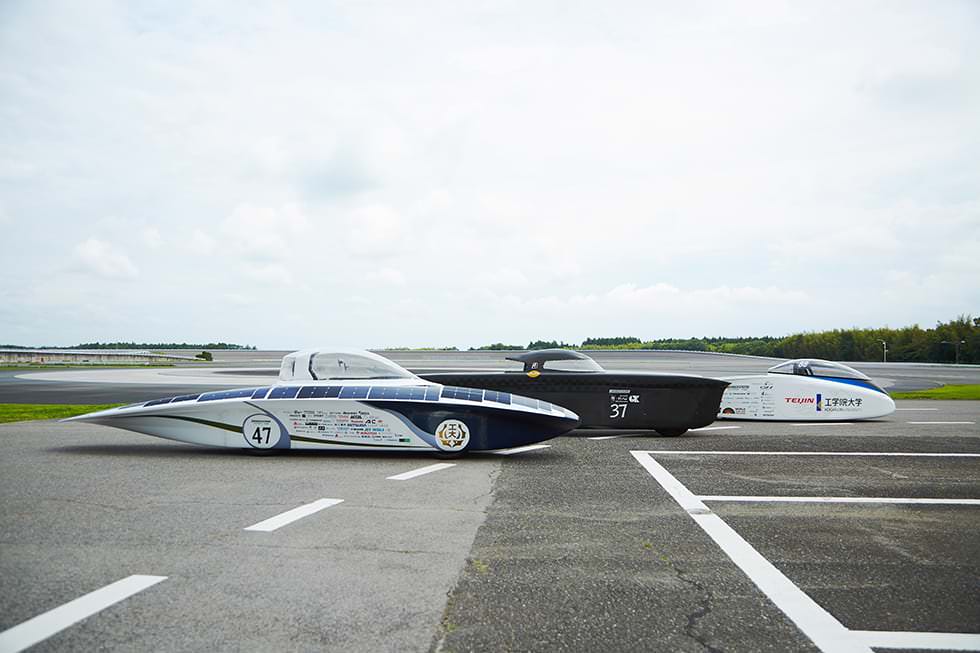
-A vehicle weighing only 150kg runs with the speed of 100km/h throughout the course with just the sound of the grip-
-Nasushiobara, Tochigi
A shakedown took place in Bridgestone Proving Ground at Nasushiobara, Tochigi on July 13th and 14th 2019.
Unlike the typical auto-mobile race events, there was no sound either the engine noise or the wind. It was so quiet that you almost forgot you were at a race track.
The cars that participated in the race were Japanese solar cars. They will take part in the biennial solar car race event Bridgestone World Solar Challenge where teams from all over the world will traverse the land of Australia for 3,000km over five to six days.
To compete in the upcoming BWSC race in October this year, the three Japanese teams from Kogakuin University, Nagoya Institute of Technology and Goko High School came to test their cars in this Nasushiobara race.
The following BWSC stories will feature the teams’ new vehicles and their enthusiasm toward the race.
Marking the tenth anniversary, Kogakuin University aims to win the championship
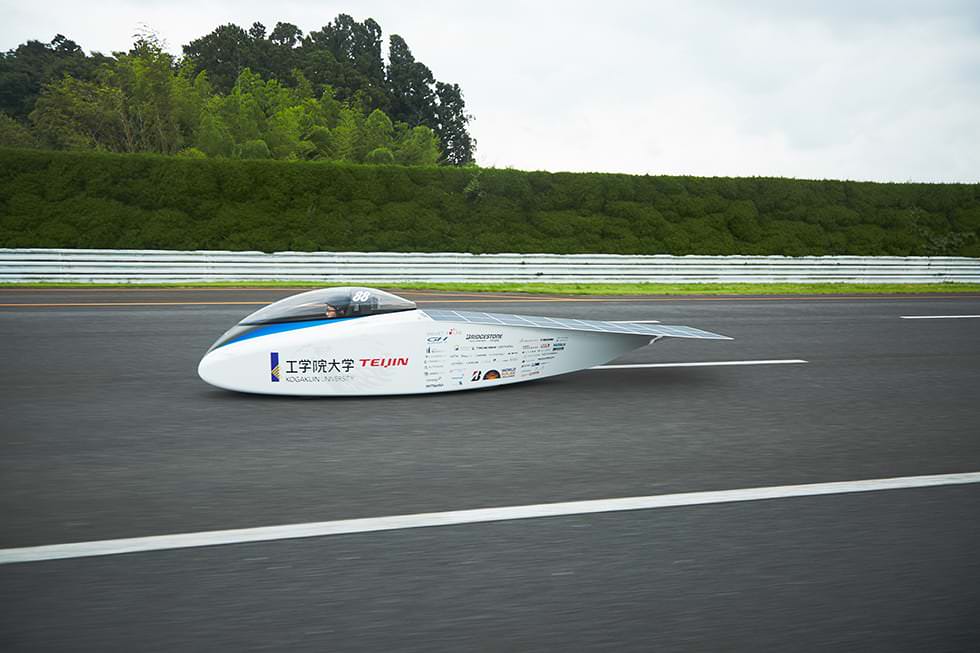
“This time, we have brought the car made to win.”
Speaks Hiroto Hamane, the director of Kogakuin University Solar Team, while pointing at their new vehicle, “Eagle,” they had prepared for the upcoming race. The director Mr. Hamane, whom we interviewed before at the event for World Environment Day, came to this test run with scores of team members, bringing a new car announced at the end of June.
Hamane:We are aiming to win the championship this time. For that reason, we have prepared a new car, Eagle, subsuming the concept of nature morphing, with the eagle-billed nose that reduces air resistance. The vehicle is light with a low center of gravity and has a minimized surface area which will improve aerodynamic performance. With regards to solar panels, we have mounted solar panels used for satellites onto the vehicle that have a high generating efficiency.
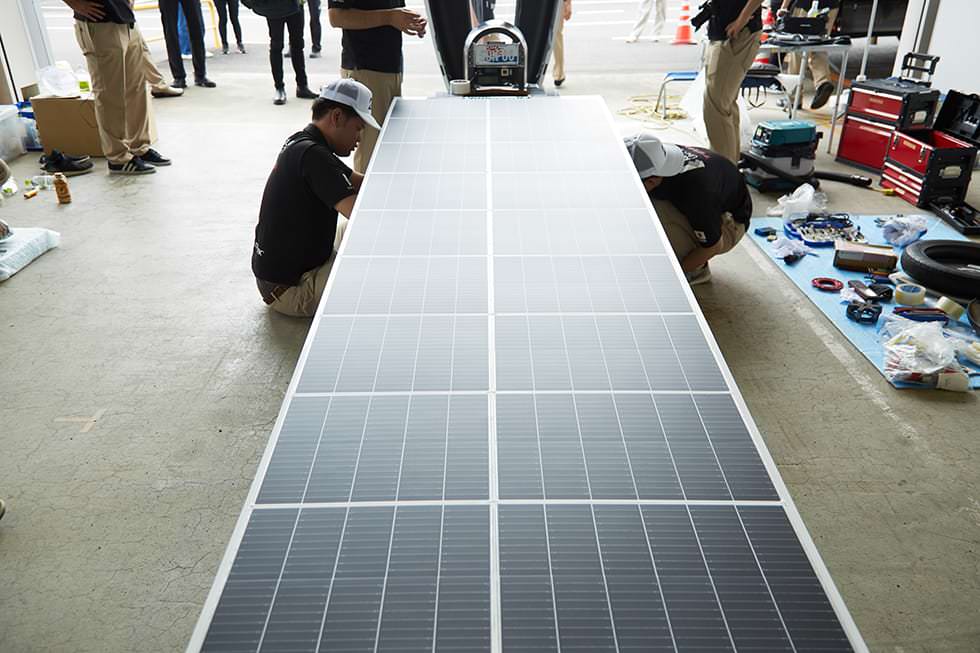
They used silicon panels for this test run instead of the satellite panels which will be used in the upcoming race.
BWSC17 results had an overwhelming difference between the teams using silicon panels and those with satellite panels. Taking that into consideration, Kogakuin University came to a conclusion of adopting those satellite panels- which costs 10 times more than the previous ones- for the intent to win for this race.
Kogakuin University Solar Team, established in 2009 as a student project, allows any student regardless of their major or their age to join the team, as long as they express their desire. Currently, it boasts 388 members. The captain, Daisuke Ozaki, mentioned the expectations cast upon his team as follows.
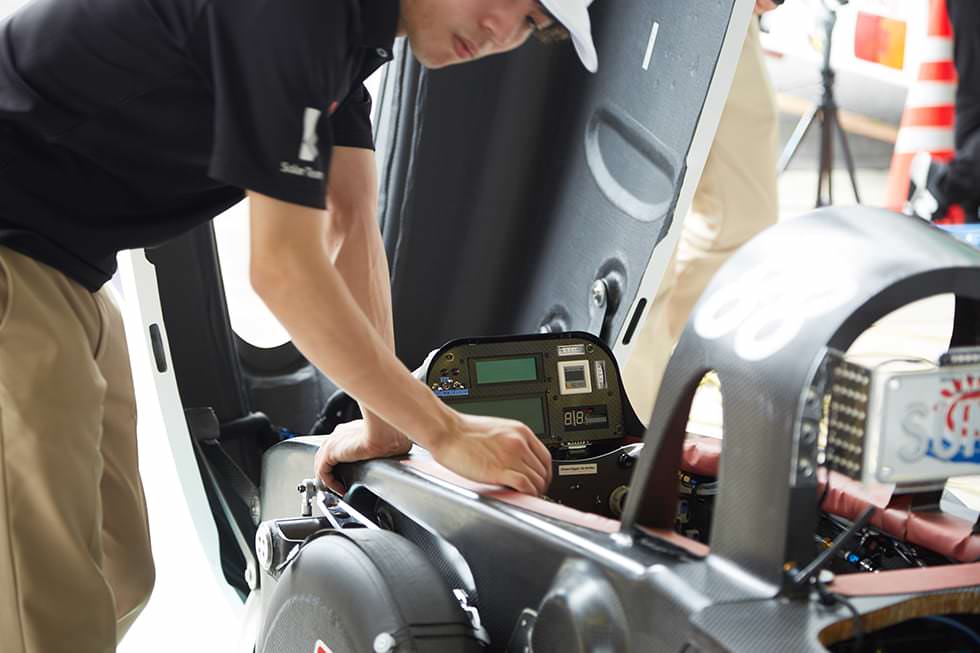
Ozaki:This year is the tenth anniversary of the team, being one of the most important years since its establishment. We have received so much expectation from so many people, including the university, various faculties, alumni, and sponsors. Learning from the past experience, we made some significant improvements to our car this year. We believe we will rank high, even be at the top, as long as we are able to fully utilize all of the information and knowledge accumulated up to this point.
Thirty selected members will go to Australia to participate in the 2019 race, while more than 70 members will stay in Japan to form a support team. The team will analyze the movement of clouds using information relating to ground positions and weather charts. They will then send the information to their direction vehicle while also checking on other teams’ move. By doing this, they are going to have at least 100 members supporting the team in the upcoming race.
Hamane:Our team has various sections, such as the Media Section, General Affairs Section and Finance Section, each of them operating with their own expertise. In relation to the drivers, some of them have been driving karts since the age of four or five, while others have experienced driving in the Formula SAE Japan. We will participate with the best preparation.
Completing the race with minimal cost and members --- Goko High School
Several hundred members, scores of sponsors, and a cutting-edge vehicle.
In contrast to Kogakuin University, Goko High School from Kure, Hiroshima, has taken a different stance.
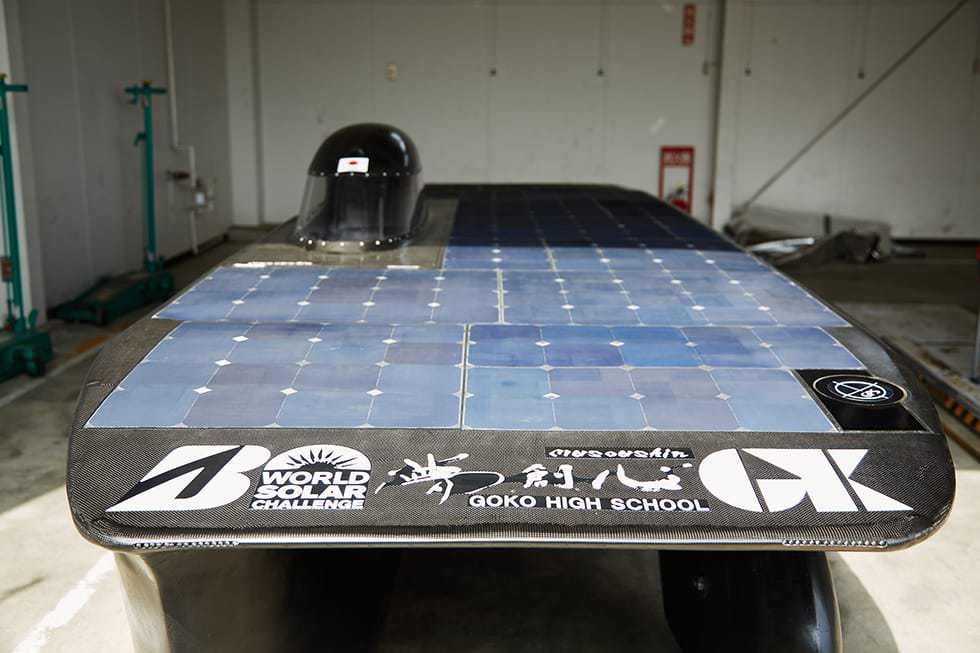
Takeda:As we are a high school team, the budget is very limited in comparison with other teams. Instead of asking for sponsorship from companies, we reuse parts which have been used in the past or use materials we can procure from home centers to build our car.
This is what Nobuhiro Takeda, Chief Director of Kure Takeda Gakuen School said, and who is leading the team. His school began developing solar cars for the purpose of improving the skills of the teachers by tackling difficult high techs. At present, Nobuhiro Takeda and less than ten students are preparing to participate in the race as part of the activities of Eco-tech Club.
This will be the fourth time Goko High School participates in BWSC. They came third in 2009 Adventure Class. Based upon that experience, they have selected a car design which is different from the other two teams who are participating in the test run.
Takeda: This year, we have chosen a catamaran design for our car. We have been striving to minimize the front projected area which will allow air to flow between the wheels. It is not too much to say that the world of solar cars means the world where we fight against air resistance. We believe this design will give us a great advantage.
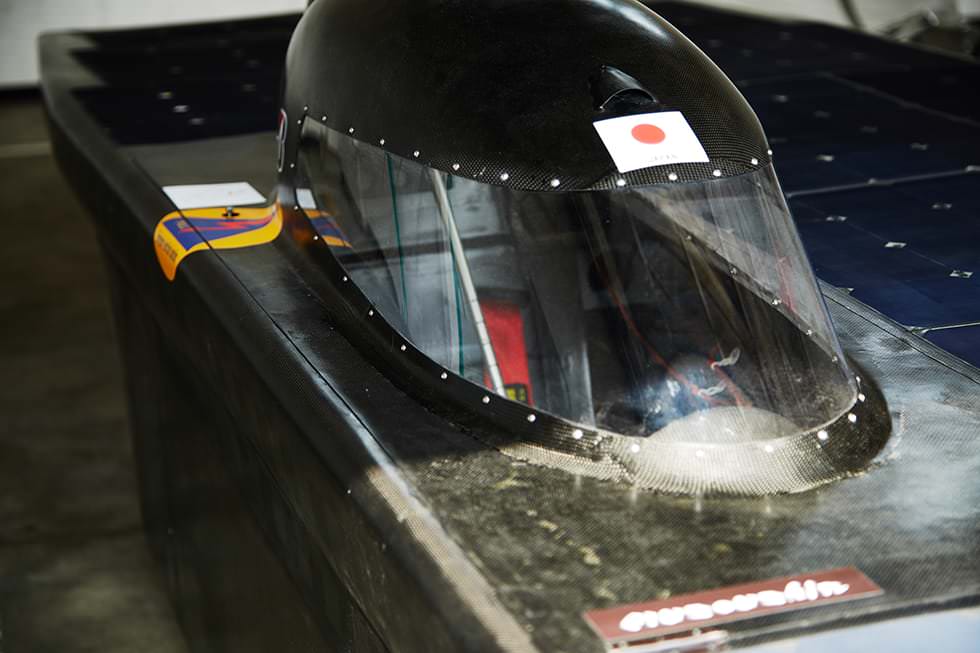
As a part of high school activities, the students are ones responsible to build the car.
While shaving Styrofoam to form the vehicle body, casting FRP, affixing carbons, and shaving metal parts, they collected an abundance of manpower in the form of students. What their school aims to achieve with this car in the upcoming race is “to run the whole race.”
Takeda: We have built this car for the purpose of running the whole race. We actually failed to run the whole race last time. We want to complete the entire race this time, by any means. With this goal in our mind, we have been making the necessary preparations.
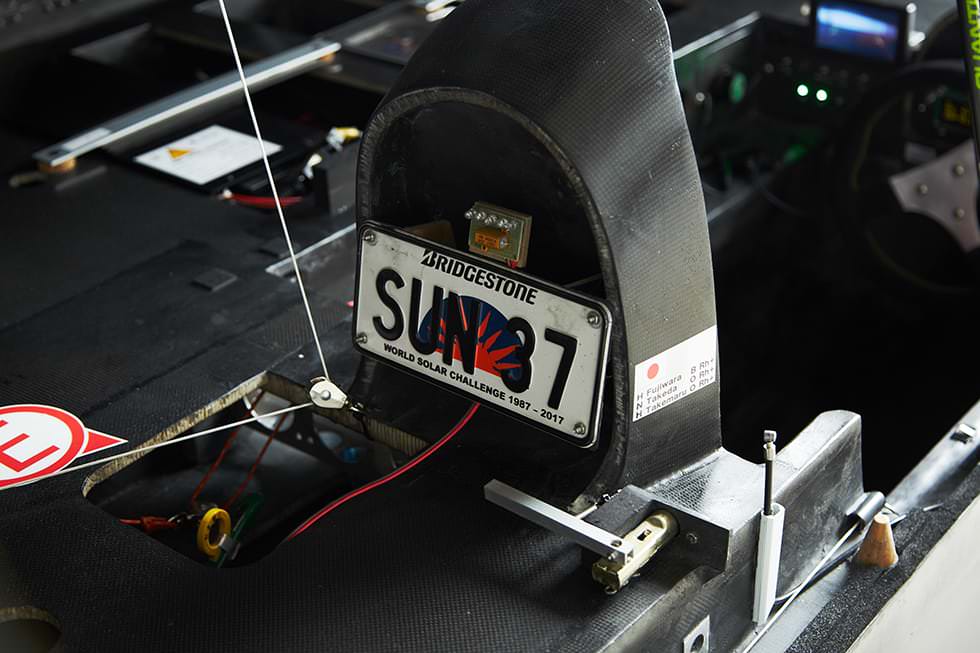
In the actual race, teachers will drive the car as the high school students do not possess a driver’s license.
They are going to challenge other competitors with the minimal amount of members and cost. This must be one of the ways to enjoy BWSC. The technology required to build a car to run 3,000 km in five days cannot be done easily. They are trying to acquire such technology with high school students. --- This challenge itself has a great significance.
Aiming to rank in the top by using silicon panels ---Nagoya Institute of Technology
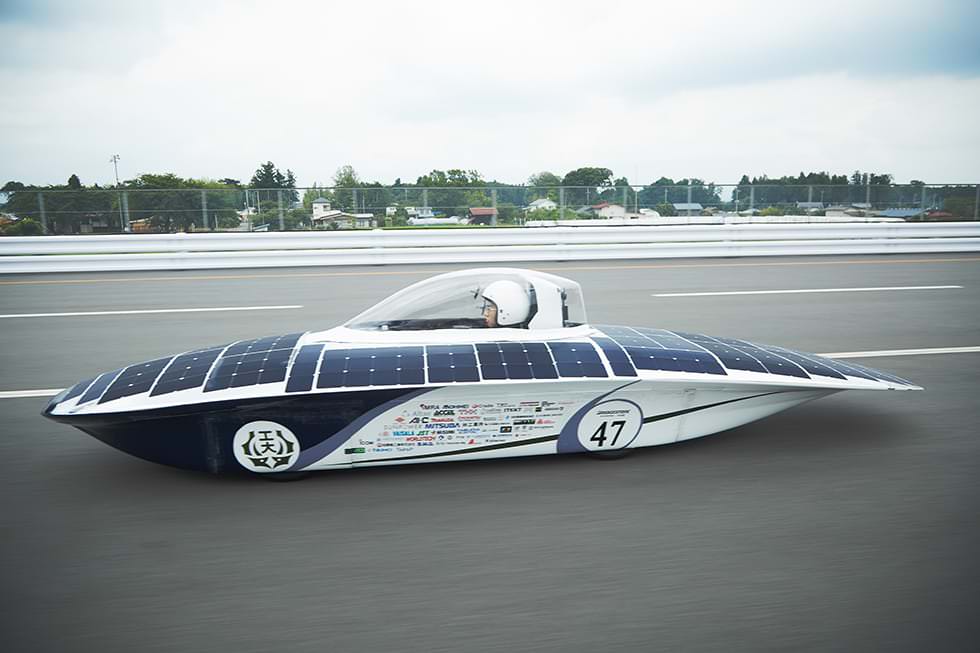
The third team is Nagoya Institute of Technology in Aichi Prefecture. This school participated in BWSC for the first time in 2015 as part of the activities of Solar Car Club, marking their third time in this event. Ryoya Isoai, Team Manager, said their goal in this race was to “come first among the teams equipped with silicon solar panels.”
Isoai: In the upcoming race, we are aiming to win the championship among the teams using silicon solar panels. Under the current regulations, the cars using satellite panels can be smaller, lighter, and achieving high performance aerodynamics than those using silicon panels. It is quite hard to overcome that hurdle. Therefore, we aim to win the championship in the teams with silicon panels, and then, as a future goal, our intention is to build a machine with silicon panels that can beat those with satellite panels.
The machine developed by this institute is the monohull design. Nagoya Institute of Technology used to race using a catamaran model until the 2017 race, similar to the one used by Goko High School. However, considering the aerodynamic performance, they have decided to use a monohull model in this race for the very first time.
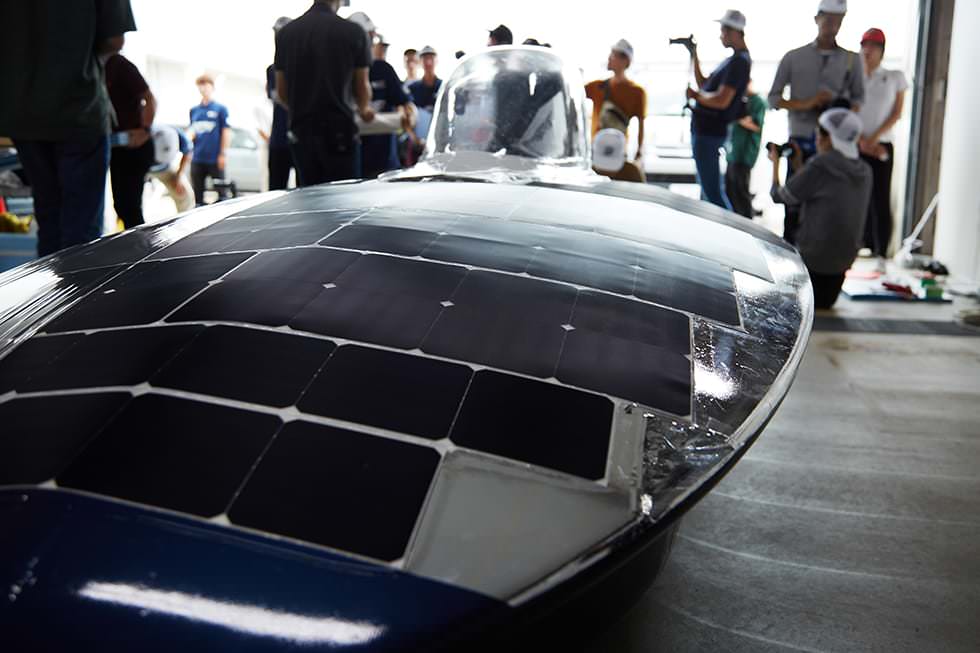
The Body with a 3D curved surface
Isoai: The most striking feature of this car is the upper part, which has a 3D curved surface. The 3D curved surface improves the aerodynamic performance. As a down side, it increases the difficulty of the entire process, such as affixing panels and manufacturing the body. This time, one of our sponsor companies helped us the manufacturing process so we were able to produce a 3D curved surface which is almost true to the one drawn in CAD.
Solar Car Team of Nagoya Institute of Technology was established in 1993, having a long history. They have formed a team for the BWSC, which consists of advisors, who will provide the team with technical support, and those participating as drivers, in addition to present team members.
Isoai: Our team, at the moment, consists of approximately 30 student members; it is smaller than Kogakuin University. Although we have a professor assisting us as an advisor, the students themselves are fundamentally the main performers. After receiving some technical advice, we designed the car by ourselves, customized the machine according to what we believe is ideal, and let it run. This is the uniqueness of our team.
This test was virtually the first run after the completion of the machine. While checking stability, just like the other teams, they seemed to have secured enough time to acquire some data.
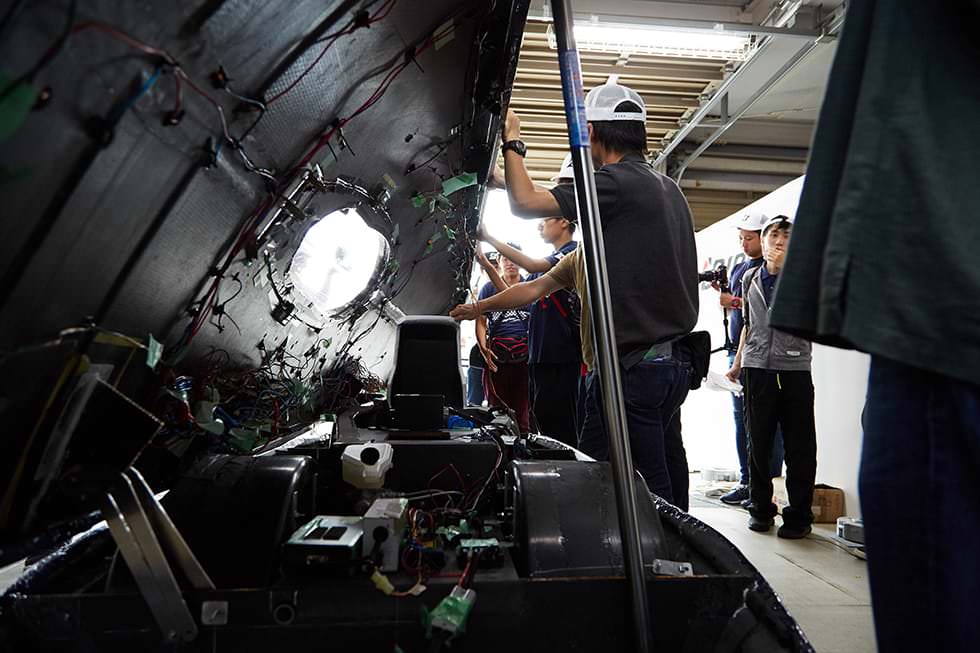
Isoai: Our primary task during this test run is to acquire data, which we are going to utilize when we are establishing our strategy for Australia. Our machine is about 90% complete. What we will do now is make some final adjustments. Based upon the data we collect today, we will try to find the best possible way to operate our machine in the upcoming race. With our focus being kept on that aspect, we are going to continue aligning the sights.
The three teams are currently making final adjustments in preparation for the race in October.
In addition to these three teams, Tokai University team who are completing their test run on a different date will join BWSC19 from Japan. In total, more than 40 teams from 23 countries are preparing themselves to participate in this race. Despite their different goals and team systems, they all are aiming for one target, completing the 3, 000 km course. All of the teams are now getting ready to face the most important phase.
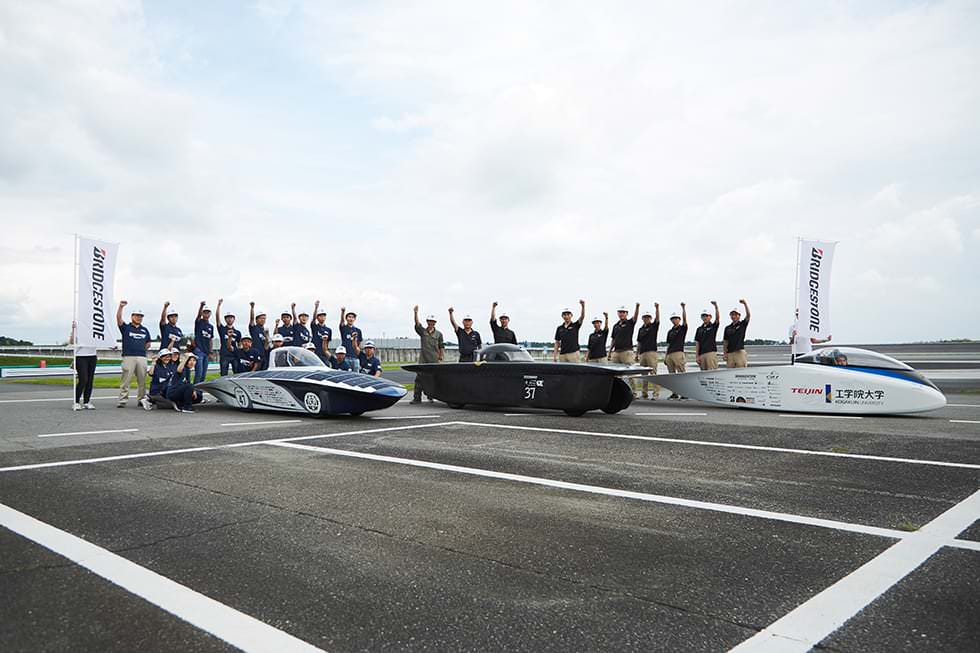

-
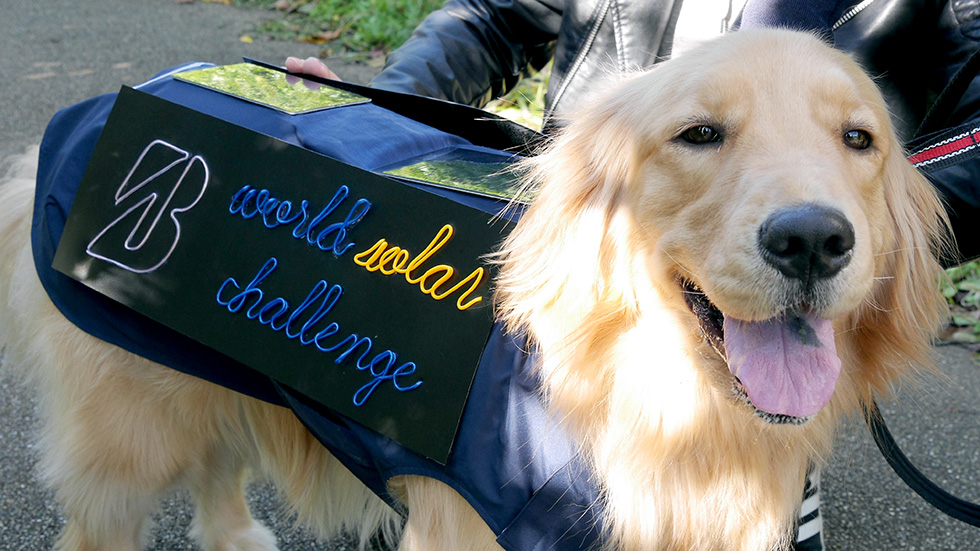
Kome, the popular Golden Retriever gives it a try! – A dog jacket that uses solar energy
-
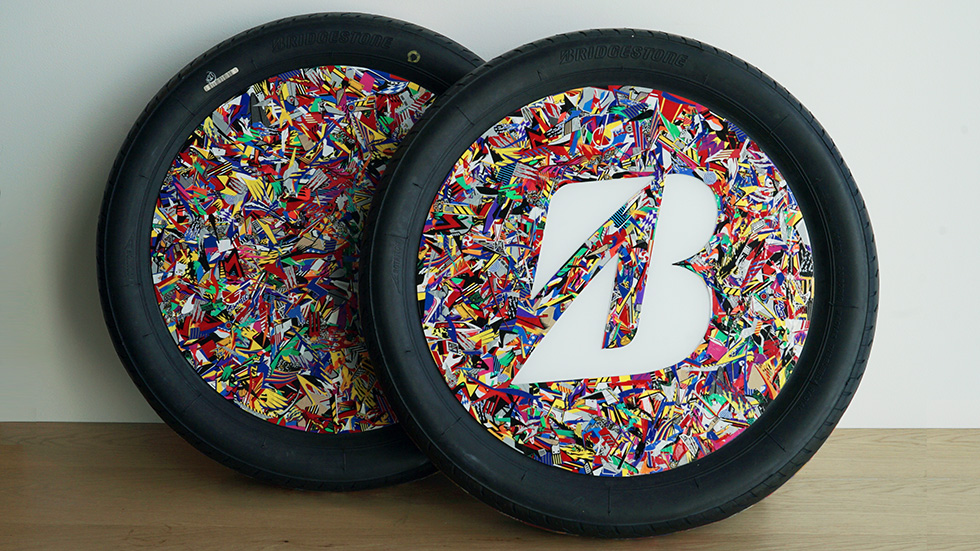
Dressing up tires with stickers for model cars! BWSC collage art piece by Funny Dress-up Lab
-
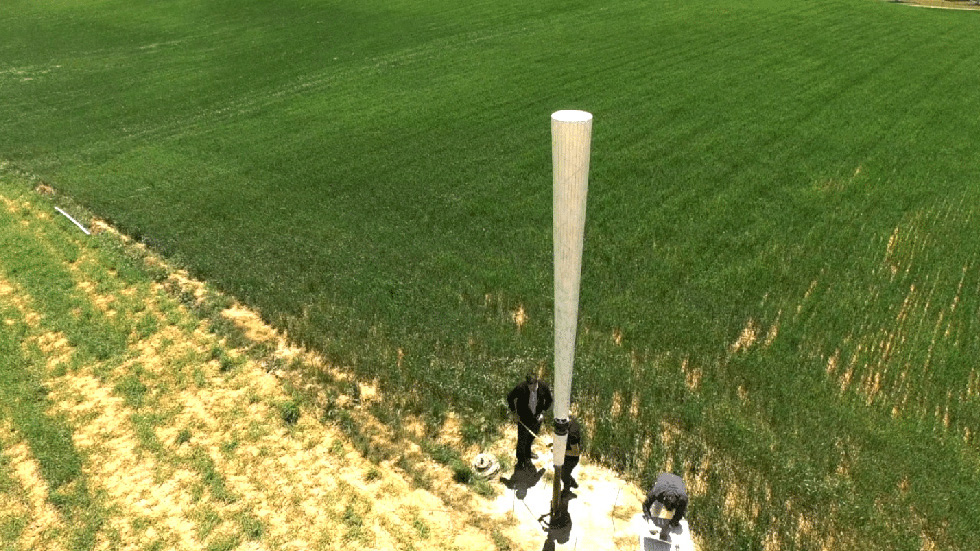
No blades! A pole-shaped wind turbine, Vortex Bladeless, generates power by shaking.
-
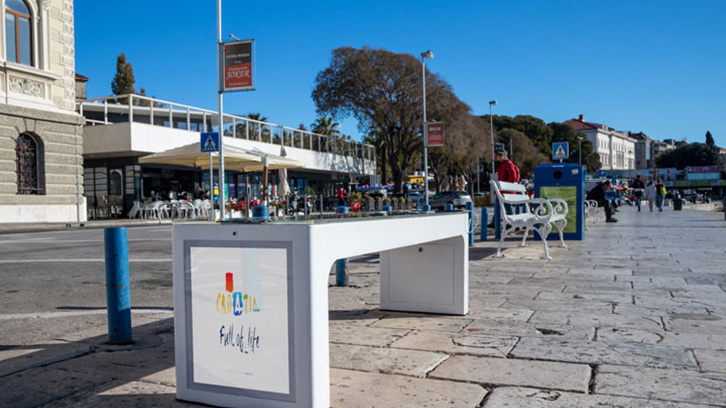
Solar-powered bench Steora as a device charger, Wi-Fi hotspot, advertising display, and CCTV!

-

Kome
Kome is a fluffy, one-year old Golden Retriever. She inherited the territory from her owner’s previous dog, ef. Affectionate and playful, Kome melts everyone’s heart with her sweet baby face in contrast to her impressive physique.efrinman Kome’s owner. She is an illustrator popular for her dog illustrations and comics.

Kome, the popular Golden Retriever gives it a try! – A dog jacket that uses solar energy
-

Funny Dress-up Lab
Collage artist. Fascinated by various aspects of decorative stickers, such as their vivid colors, unique shapes, misregistration, and the fact that they are now dead stock, he has been creating collage works using solely decorative stickers without altering them in any way. He will cease creating these works when the current stock in the world runs out.

Dressing up tires with stickers for model cars! BWSC collage art piece by Funny Dress-up Lab
-
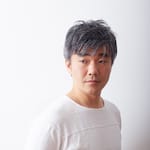
Taku Omura
Product designer. Taku Omura designs personal items, such as household goods and stationery, and develops his own products. His tweet with a hashtag, making proposals for corporate gifts without being asked, often becomes a trending topic on Twitter.
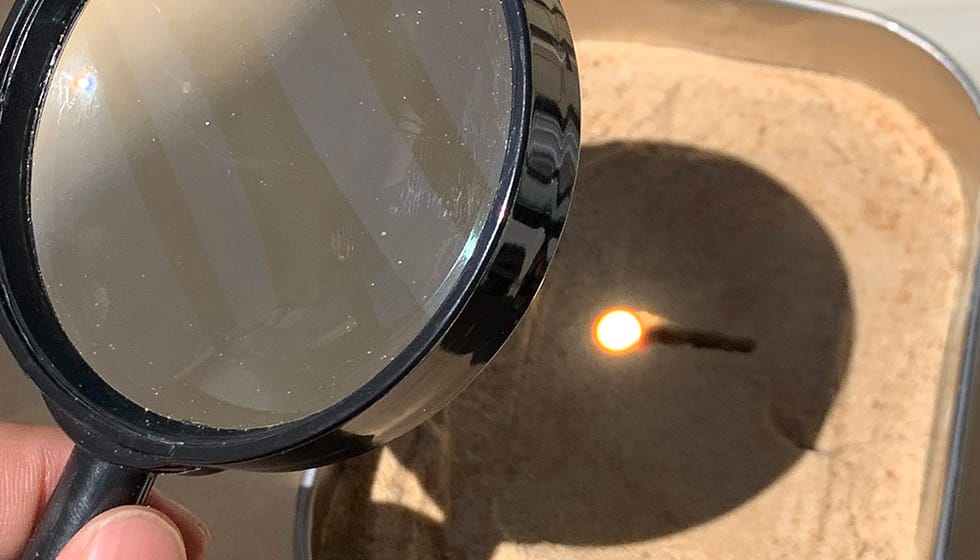
Give it a try! Taku Omura elaborates on solar-powered candy crafts with a magnifying glass
